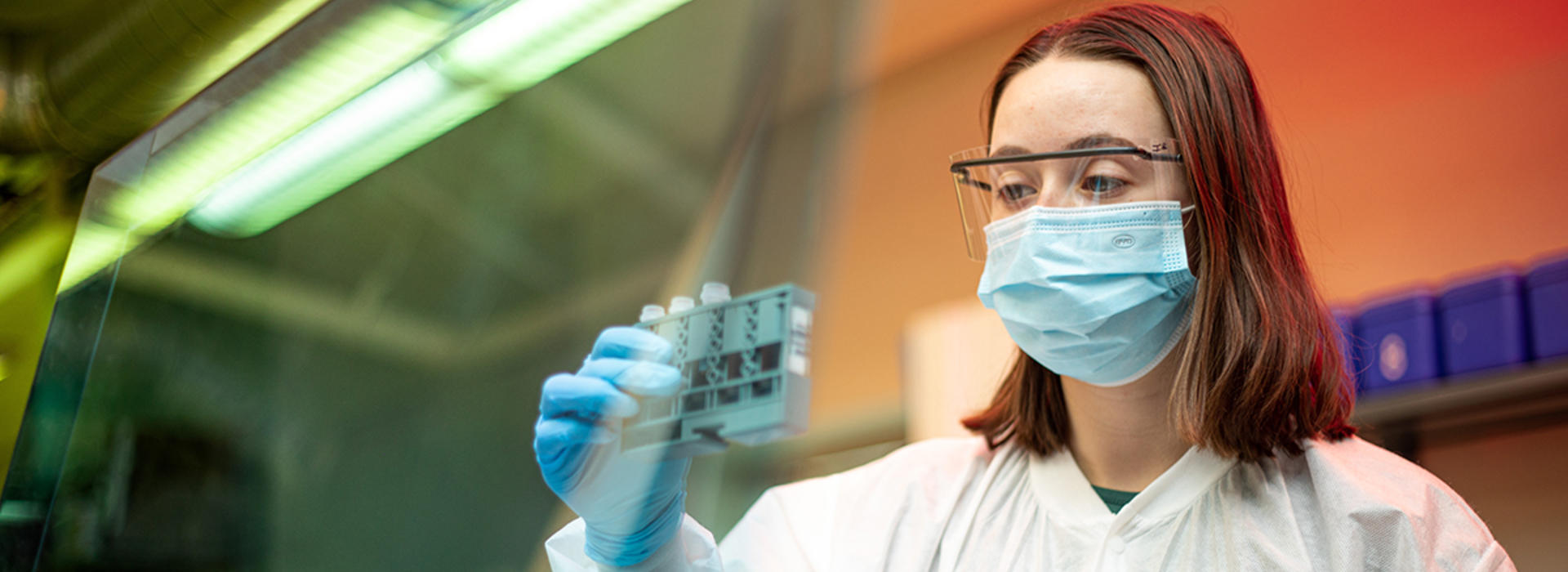
Reflections on the COVID-19 Pivot in Academic Medicine
Reflections on the COVID-19 Pivot in Academic Medicine
16 U of M Medical School Leaders Share What’s Changed, What’s Next
Read time: 10 minutes
Weeks before the larger population of Minnesota even heard the term “coronavirus” for the first time, the University of Minnesota Medical School began preparing itself to respond. Medical School Dean Jakub Tolar, haunted by terrifying chest X-rays from Wuhan, China, formed a task force with Tim Schacker, MD, vice dean of research, to set the stage for the research and clinical needs associated with a possible outbreak in the United States. That was January 17, 2020 – two months and 10 days before the state’s first stay-at-home order.
That preparedness has undoubtedly saved lives as well as contributed to the international body of science behind COVID-19, with the help of dozens, if not hundreds of, standout leaders within the U of M Medical School since then. A few notable, early successes:
- March 2, 2020 – Dean Tolar and James Hereford, CEO of Fairview, form the M Health Fairview Incident Command Center, led by Medical School faculty and M Health Fairview nursing leadership. This center was pivotal in resource allocation management, timely updates and a coordinated response across the health system.
- March 15, 2020 – Dean Tolar launches COVID-19 rapid response grants, which aligned disparate researchers and clinicians throughout the University around COVID-19.
- March 17, 2020 – Dean Tolar approves a plan to convert two U of M facilities into a new testing facility, which was the state’s fourth site at the time. This site becomes the testing command center for the entire M Health Fairview system and leads the state in turnaround time throughout the year. By late April, Governor Walz selected this site to be a part of a testing partnership aimed at providing universal COVID-19 testing across Minnesota.
- March 26, 2020 – M Health Fairview Incident Command Center pivoted the use of Bethesda Hospital in St. Paul to be the home of the state’s first and only COVID-19 cohorting hospital. Bethesda’s survival rate for cohorted COVID-19 patients was among the highest seen internationally at 72%.
Over the last year, faculty spearheaded remote-monitoring clinical trials using repurposed drugs, including remdesivir, hydroxychloroquine, losartan, metformin, and more, and were hand-selected to lead the third-phase of the Novavax vaccine clinical trial. And, on the testing side, after developing homegrown PCR and antibody tests, the U of M Medical School was chosen as one of four national centers for the NCI Serological Sciences Network (SeroNet), which aims to combat the pandemic by improving the ability to test for infection, especially among diverse populations, and speed the development of treatments and vaccines in the future.
These quick pivots to respond positioned the U of M Medical School as leaders and innovators who have helped shape the future of healthcare and healthcare education. Sixteen of them, who were featured in last spring’s Impact Medicine series, share what they have learned and what the post-pandemic world of healthcare may bring.
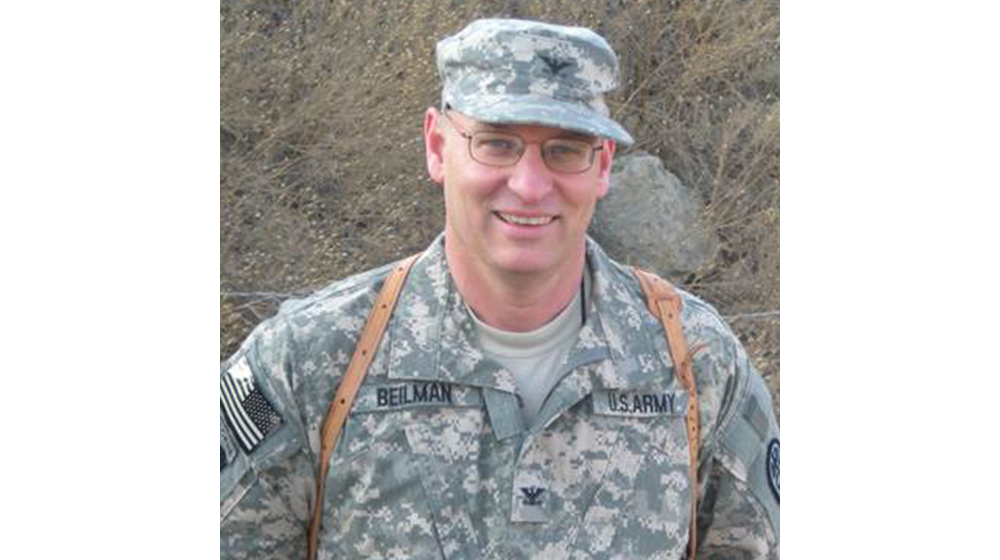
Department of Surgery
Led the Development of State’s First and Only COVID-19 Cohorting Hospital
This last year has really helped change healthcare at the local level for me, both in the M Health Fairview system and in the intersection of our clinical work and academics. It has highlighted the effectiveness of our partnership with Fairview and has demonstrated the ability of it to bring effective care to the patient bedside rapidly and effectively. It’s also allowed us to celebrate healthcare workers of many disciplines who care for patients.
We have demonstrated the ability to react quickly to this disaster and understand that we can step up and meet the needs of our patients and the state of Minnesota when they need us the most. We will continue the command system model moving forward, which has helped evolve leadership of the M Health Fairview system. It connects people from across the healthcare system, and we continue to meet twice weekly.
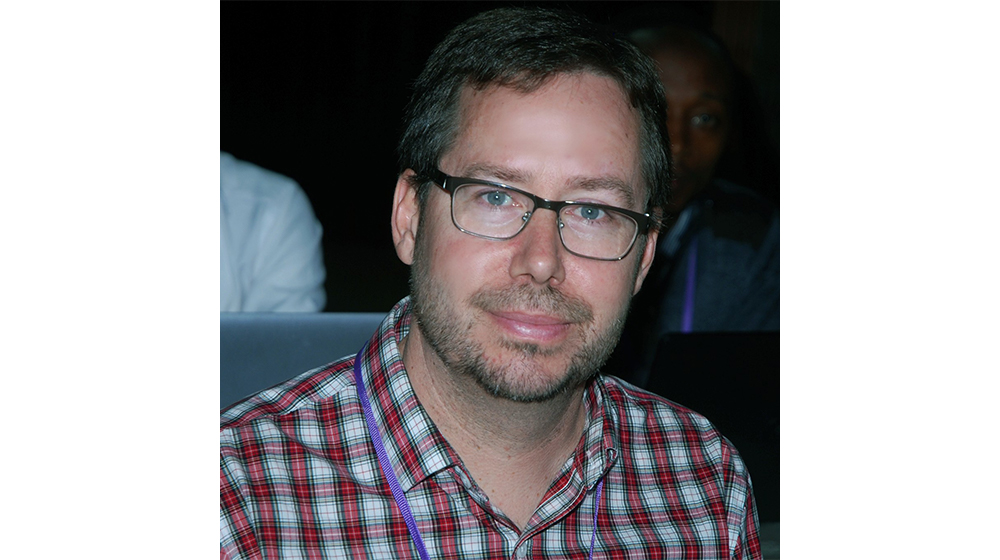
Department of Medicine
Led Three Clinical Trials on the Use of Hydroxychloroquine in COVID-19 Treatment
Unfortunately, our team’s trials were the first to demonstrate that hydroxychloroquine was not an effective early outpatient treatment for COVID-19. We also demonstrated that it was not effective as a preventive medicine either when taken after exposure or before exposure. Other trials have since been completed around the world, coming to the same conclusion. I am grateful for all of the volunteers who agreed to participate in the clinical trials and helped improve the world’s knowledge of COVID-19 therapies.
Our team’s clinical trials have also led to a paradigm shift in how clinical trials are conducted. Traditionally, one virtually always would see a research participant in person. Yet, for busy people with jobs and family commitments, coming to multiple in-person research study visits during the workday is unrealistic. In a pandemic with a highly contagious virus, it was not possible. So, we designed our trials as pragmatic internet-based trials, collecting information directly from participants. Since our original three trials in March through May 2020, many others have now replicated our use of internet-based trials for other COVID-19 therapies, where people can participate in a clinical trial from their homes. While not every clinical trial can be a remote trial, for trials of existing FDA-approved medicines, internet-based trials may be part of the future of healthcare.
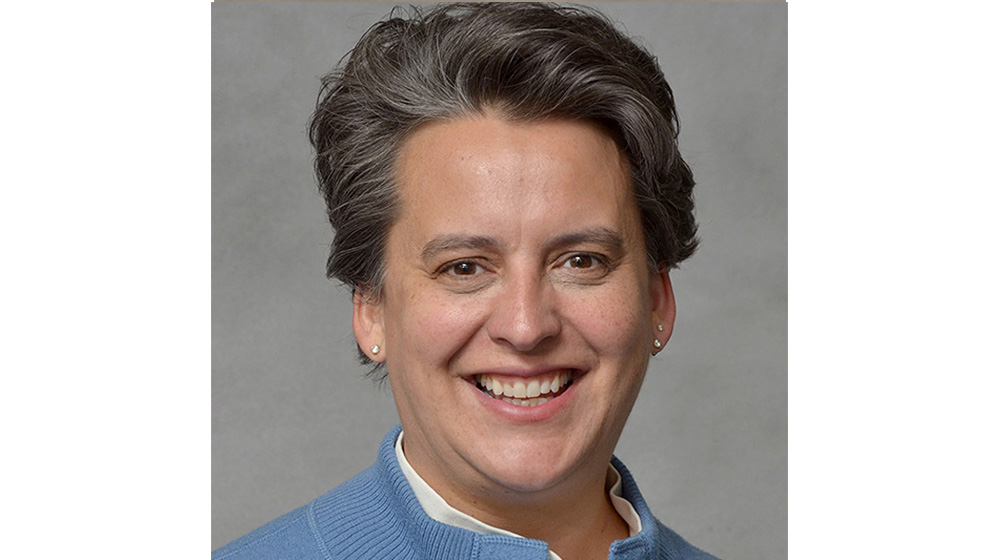
Department of Surgery
Helped Treat Minnesota’s First COVID-19 Patient Using ECMO
I am happy to report Minnesota’s first COVID-19 ECMO patient is doing well and training for a triathlon. We have seen a number of survivors in our follow-up clinic, and it is gratifying to see their progress. We developed a unique partnership among all the ECMO directors in the state to share information regarding utilization and capacity as well as best practices. As a result, we have great survival outcomes, and we were in a unique position to publish our experience.
Also notable, much of our surgery educational programming moved to a virtual format. One great thing that resulted from this move is that we increased our Grand Round attendance from an average of 87 attendees to 106 with the virtual format. More people can be in community with each other, with all the limitations of the format, than were in the past. But, we sorely miss the in-person gatherings and look forward to their return. We are also opening our minds to possibilities and continuing to look for more opportunities to ‘be together,’ and thereby be more inclusive overall.
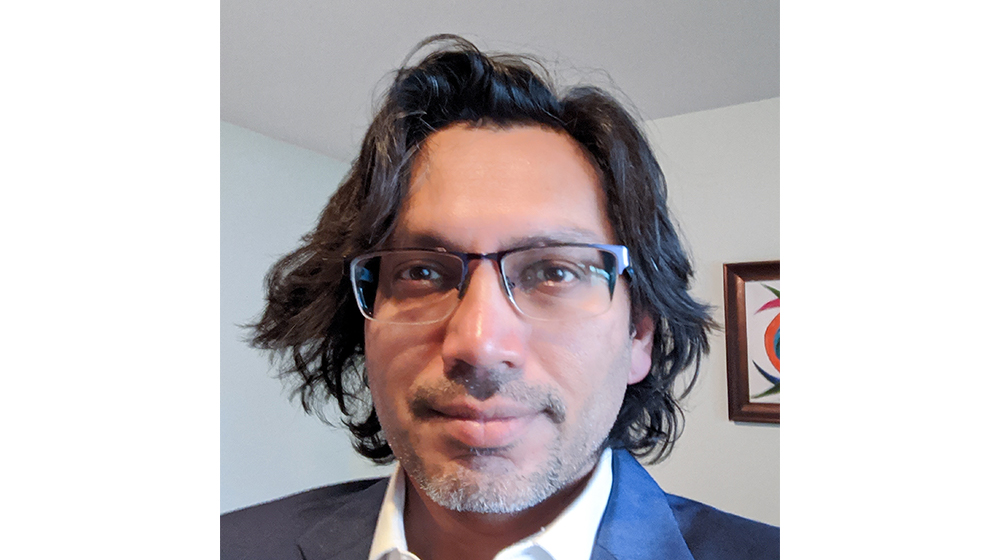
Department of Surgery
Led the Medical-Grade Testing of U-Developed Facial Masks
Linsey's [Griffin, PhD] work continues to advance, and she now has a grant that has allowed her to further refine the mask technology for better fit. We are looking at testing these masks out in the healthcare environment with multiple healthcare workers. I spent a lot of time working on a clear mask through which someone could lipread and maybe assess facial expression better. This is very possible, but the trick is to also make it stay clear, while being an effective filter.
Unquestionably we have learned that virtual interaction, both with patients as well as with each other, can dramatically improve efficiencies, if we can ‘fix the bugs.’ I think also the discovery that we can wear masks and prevent the flu is huge. It may be that we push to wear masks if anyone is at all feeling unwell. On the other hand, personal interaction, like sharing a meal, etc., is so precious. We will likely cherish those opportunities more than ever moving forward.
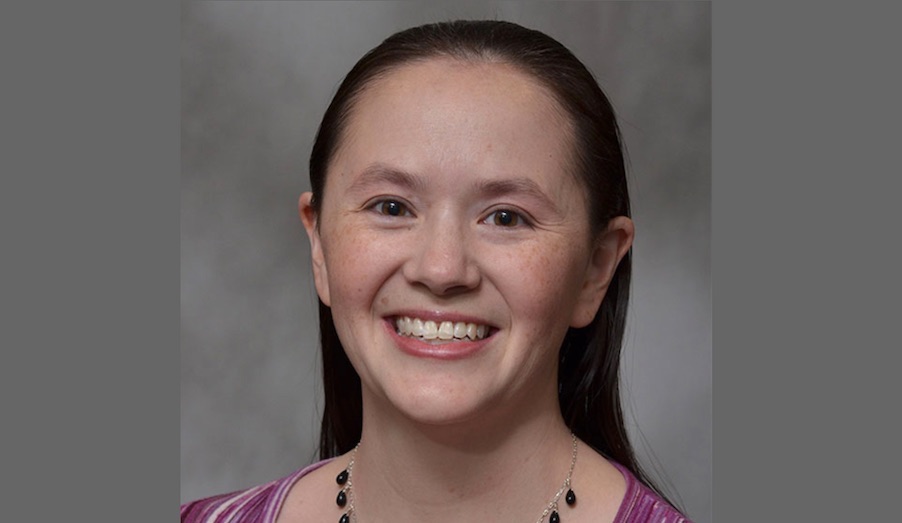
Department of Laboratory Medicine and Pathology
Helped Lead the U-Developed Antibody Test and ARDL COVID-19 Testing
This past year has been a combination of exhausting and exhilarating, due to the pace and urgency of work and trying to keep up with the quickly evolving science related to COVID-19. For me personally, the pandemic has created opportunities for collaborations with talented faculty outside of my own department because we were forced to take an ‘all-hands-on-deck’ approach to tackling challenges quickly, such as developing our own methods for COVID-19 PCR and serology testing.
This collaboration with faculty in other departments at our Medical School, particularly in the basic science departments, has already laid the foundation for years of collaborative research, as I led a grant proposal in the fall that was funded to support a COVID-19 Serological Capacity Building Center. I envision that the collaborations born through the pandemic will continue well beyond, spurring additional collaborative research at our institution.
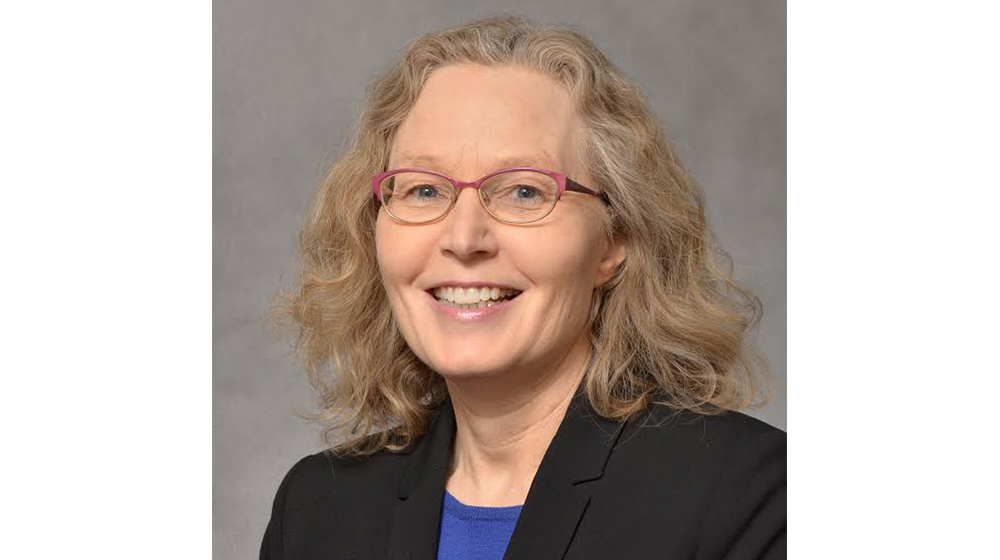
Department of Medicine
Led the Clinical Trials of Remdesivir for COVID-19 Treatment and Novavax COVID-19 Vaccine
We learned that you could conduct a study safely in a pandemic by utilizing technology to minimize face-to-face interactions. We found that e-consenting via REDCap was a very valuable tool for clinical trial enrollment and having robust electronic medical records (EMRs) can help enroll patients without being in the same room, while maintaining best practices for obtaining informed consent. Remote-monitoring of clinical trials can also be done safely by utilizing the power of EMRs and Zoom meetings. These tools can bring people from distant institutions and states together to complete multicenter clinical trials that have rapid impact on patient care in record time.
But, we still need those in-person human connections. Zoom meetings can be a good teaching tool but really can’t replace those in-person exchanges critical to learning. Also for patient care, while the physical exam is still valuable, 'seeing' the patient virtually has benefits, including better access to care – virtual visits allow us to bring back home visits. In person exams and human interactions are still the most satisfying for doctor patient relationship building, though.
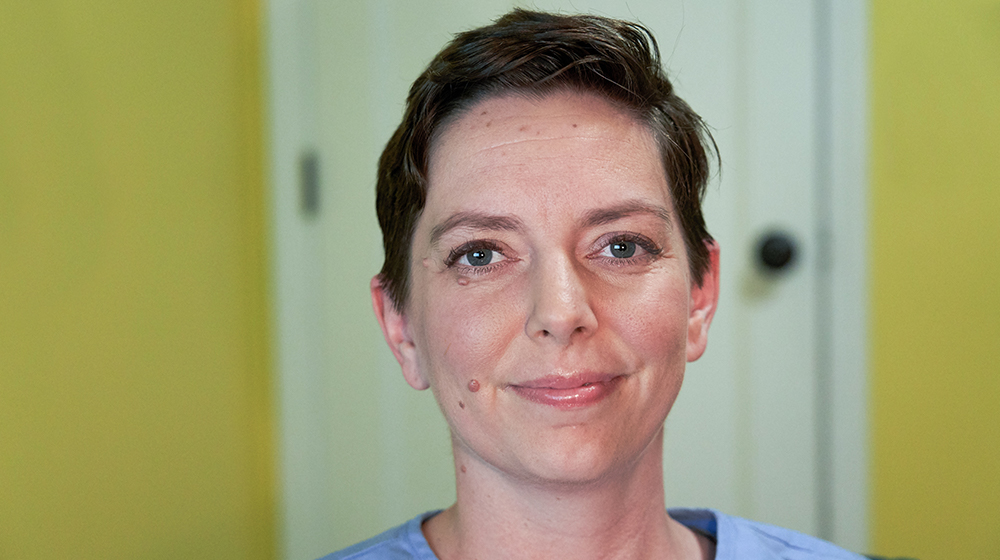
Department of Medicine
Developed a Free Course Available Worldwide for Pandemic Response
I'm still doing global health and online education, but we are currently redoing our overarching online curriculum. We've kept the short, free course available online, and we've opened up our overarching curriculum to our medical students as four different short online courses. Students have enrolled in over 350 student-weeks of global health training with over 100 students taking our two-week course on Immigrant/Refugee Health and Disaster Response.
Additionally, we had two ‘COVID-19 Outbreaks and the Media’ rotations for medical students last spring, where they learned how to communicate about COVID-19 on social media and through our blog. Because of this course, we've started a health communications thread in our ‘Becoming a Doctor’ course for third- and fourth-year medical students, including classes on social media best practices, legislative advocacy, identifying bias and misinformation and more.
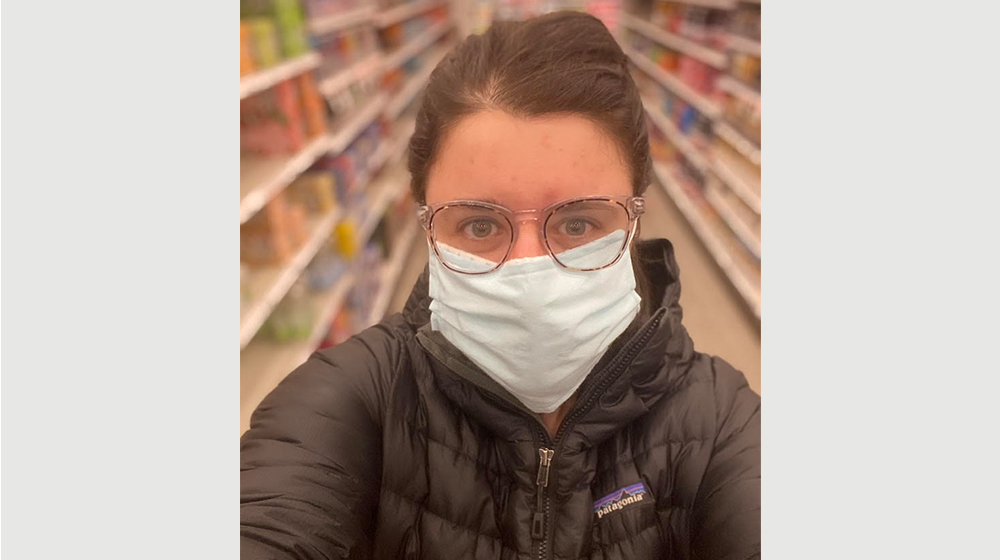
Third-year Medical Student
Helped Launch CovidSitters to Support Frontline Healthcare Workers
CovidSitters has become a University-wide project. It's a lab where students of business, nursing, medicine, public policy, public health and education have come together to solve problems as they come. We are launching a new tutoring and buddy program to support kids with parents who are essential workers. We are tailoring our services to meet the continuing needs of the people who keep us all going and emphasizing the importance of humanizing emergency response planning.
Working with my peers through CovidSitters has helped me realize that when things fall apart, people come together. Suddenly, everything becomes incredibly simple because – at the end of the day – we want to be helpful. And, when you get to work with other people who also want to help, that's when the real magic happens. It all comes down to the people.

Program of Mortuary Science
Led Educational Outreach on Virtual Service Pivot for Funeral Providers
A strong move forward in funeral service has been the recent incorporation of technology into professional practice to allow for greater participation of friends and family in funeral rites and ceremonies. Specifically, the use of Zoom, Facebook, and other methods of 'live streaming' has helped survivors participate in funeral services virtually. Many funeral homes are now adopting software programs that allow survivors to upload information about their loved one into a database prior to meeting with the funeral director, either in-person or virtually via Zoom, to plan service details.
Funeral directors are using the benefit of this added time to explore creative means of memorializing a loved during the arrangements meeting. And, although not all families prefer to use technology, the feedback from those who do choose to use it has been positive and helpful to them. Moving forward, I see continued growth of the use of technology in service planning, given the benefits it affords to survivors, many of whom live at a physical distance from each other and seek technology to help them connect when the death of a loved one occurs.
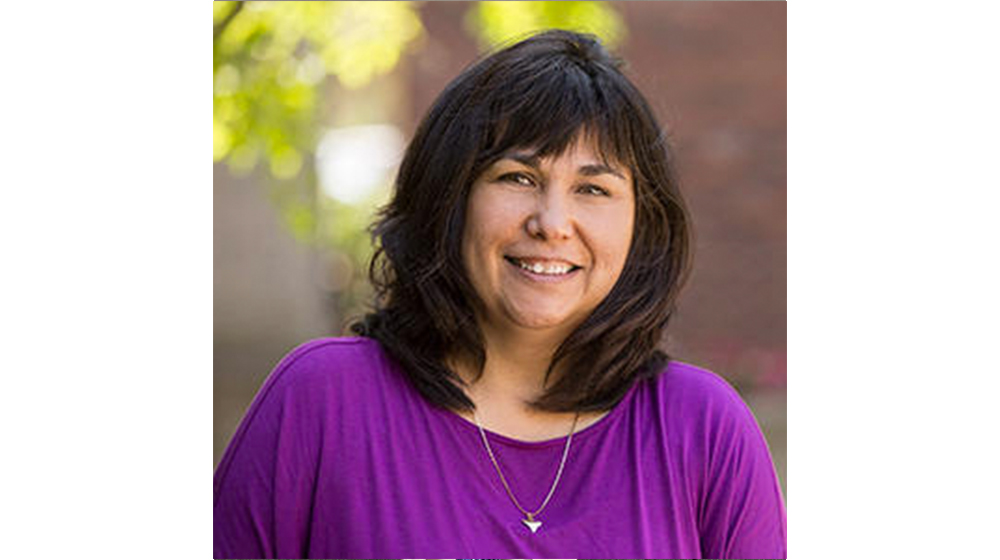
Center for American Indian and Minority Health
Developed Network for Tribal Communities in Need of Essential Healthcare Workers
COVID-19 cases, hospitalizations and deaths are all much higher for Indigenous people than any other group in the U.S. With this laid bare, we must do better to address the health disparities that Indigenous people face. This includes educating all of our future doctors about how to care for Indigenous patients.
We also found ways to continue to connect with our Indigenous students, from online storytelling events with elders to a sledding meet-up. We don't stop empowering students and communities because we're in a pandemic; we remind them they are essential to improving Indigenous health.
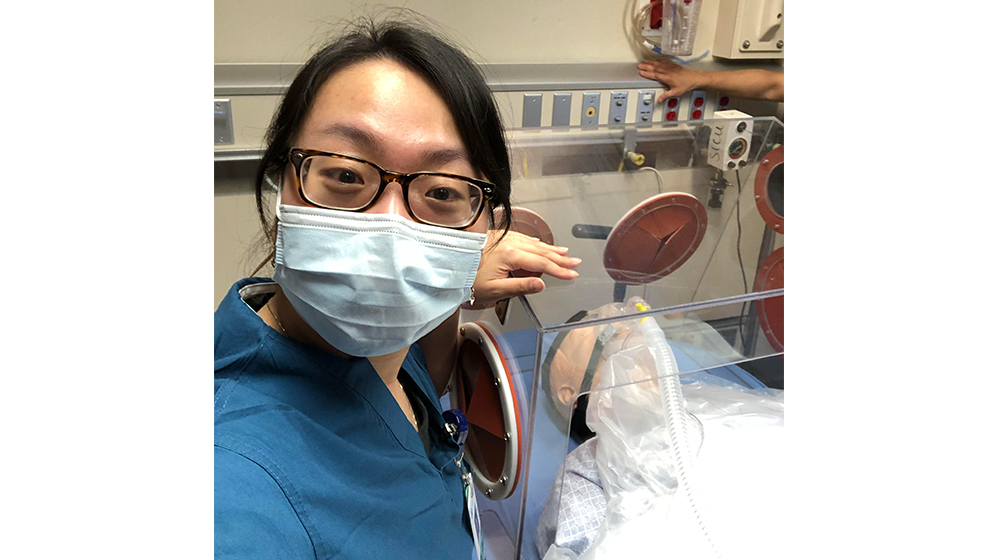
Second-year Medical Resident
Helped Develop a Respirator Safety Shield for Hospitalized COVID-19 Patients
I am happy to share that our respirator safety shield was used during the pandemic in a couple of our Minnesota hospitals to bring families together safely during end-of-life care. Family members were able to be at the bedside of their loved ones to say their goodbyes safely with this device. Now, we are exploring other ways to use this device, such as remodeling it to be a stronger, portable negative pressure system with HEPA filtration for other airborne diseases.
I am hopeful, as we rebuild our society and community from the devastations of this pandemic, that we will also focus on shaping stronger platforms to protect our underserved populations, especially in times of crisis. The future of healthcare will be constantly changing, as we adapt and deal with the newest health threats, but I am confident based on my experience that we will overcome each challenge as long as we continue to innovate together and protect one another.
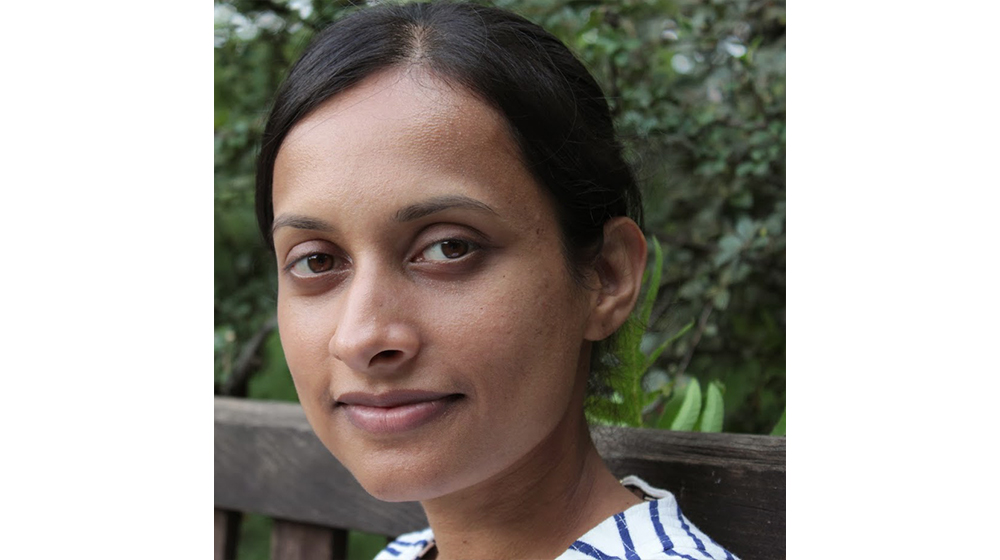
Department of Medicine
Led a Clinical Trial of Hydroxychloroquine Specific to High-Risk Healthcare Workers
Our study found that hydroxychloroquine did not prevent COVID-19 in high-risk healthcare workers. But, I'm proud of our team for initiating a randomized clinical trial in a new area with very few resources.
This year has demonstrated that healthcare workers are people. Heroic people – some of whom have quarantined from their families to care for COVID-19 patients and have provided care for patients who have had no family members at their bedside. But, people nonetheless who get tired, make mistakes and need support. Light has been shed on the plight of the working mother. Since childcare and schooling were disrupted with COVID-19, the importance of supporting working parents has become critical. It is now obvious to me that only if my family is cared for, can I do good work within our healthcare organization. One role is no longer more or less important, as they're both integral to my daily life.

Department of Anesthesiology
Helped Launch the U-Developed Emergency Ventilator Alternative, the Coventor
We just found out last week that the Coventor is being used and saving lives in Peru. In 67 days, we went from concept to 3,000 FDA-approved devices built by Boston Scientific. Fortunately, these devices weren’t needed in the U.S. Now, we’re focusing on how we can get them to the developing world.
An enduring lesson from the Coventor team was the immense potential of collaboration when you can align the resources of the University and our tremendous Minnesota industry in a shared mission for the greater good. Going forward, how do we create systems to accelerate great ideas into real-world innovations? When this project began, I was a clinical fellow working in the OR, I certainly didn’t have an R&D team. I just picked up the phone and started calling the smartest people I knew, and we could never have done what we did without having the best people on our team right away. A system like this is just something that isn’t as common in research right now. We need to develop a clear flight path for our faculty to be able to collaborate quickly in times of crisis to allow them to do what they do best. We, at the Medical School, and with our many partners, did a remarkably good job of it, but we could always do it faster. Speed matters.
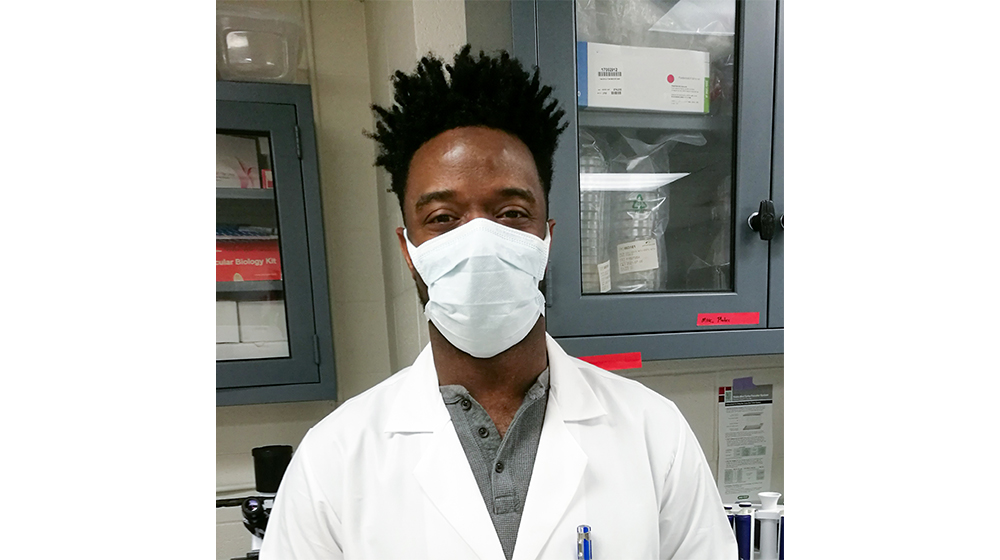
Department of Biomedical Sciences
Led the COVID-19 Wastewater Monitoring Research
Over the past year, my lab and collaborators have pushed to develop reliable methods to track COVID-19 using wastewater. We have developed a working model that measures the predictive value of wastewater on linked cases. Our results are undergoing a peer-reviewed process, but we continue to map this data in real-time for each of our community partners. We hope that our work provides a framework for future large-scale public health studies.
But, I think the spaces that I engage both professionally and personally will never be quite the same. No longer is in-person learning the default, which means potentially more people can access knowledge. At the same time, it has also highlighted the ever-growing gap in experience and opportunity for many families. Some college and K-12 students have struggled this last year due to lack of support or scarcity in the resources needed to adequately supplement remote learning. I do believe that proper investment in infrastructures in all communities could truly democratize this next-generation learning for all, which would have a direct impact on healthcare as a more digitally-connected community could lead to a more health-literate population.
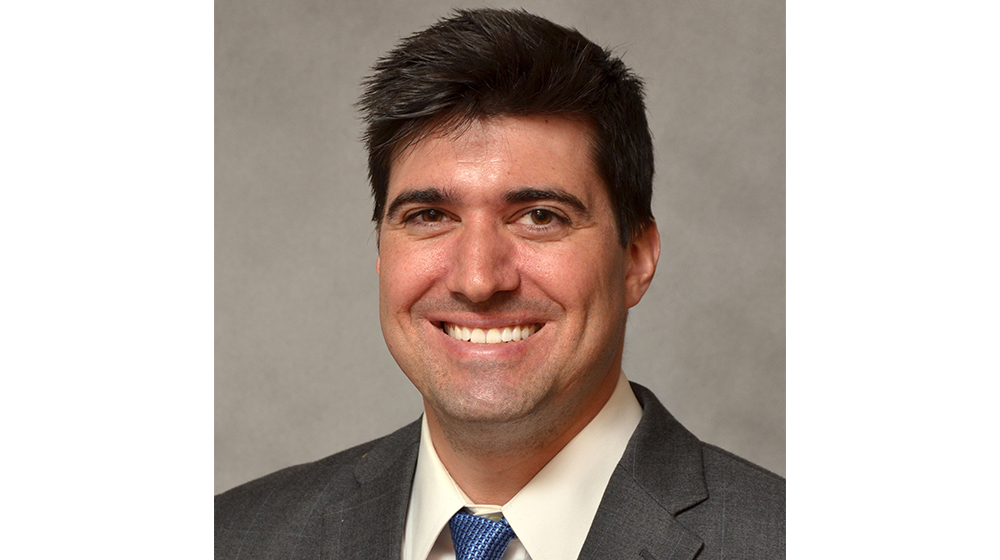
Christopher Tignanelli, MD, MS
Department of Surgery
Helped Developed an AI System to Improve COVID-19 Patient Care
I think the future of healthcare, and specifically research, will change significantly. COVID-19 really highlighted the urgent need to transition to something known as a ‘Learning Health System.’ Such a system readily integrates published knowledge and local data into clinical knowledge. It, then, uses this clinical knowledge to drive clinical practice. These new practices generate new data that feeds back into itself in a never-ending loop of improvement.
While the world had already been transitioning to this holy grail, COVID-19 accelerated the pace and, now, health systems are running toward this model. M Health Fairview was one of the national leaders in developing the LHS model for COVID-19. Now that we have done it for one disease process, I see it rapidly scaling across all clinical practice.
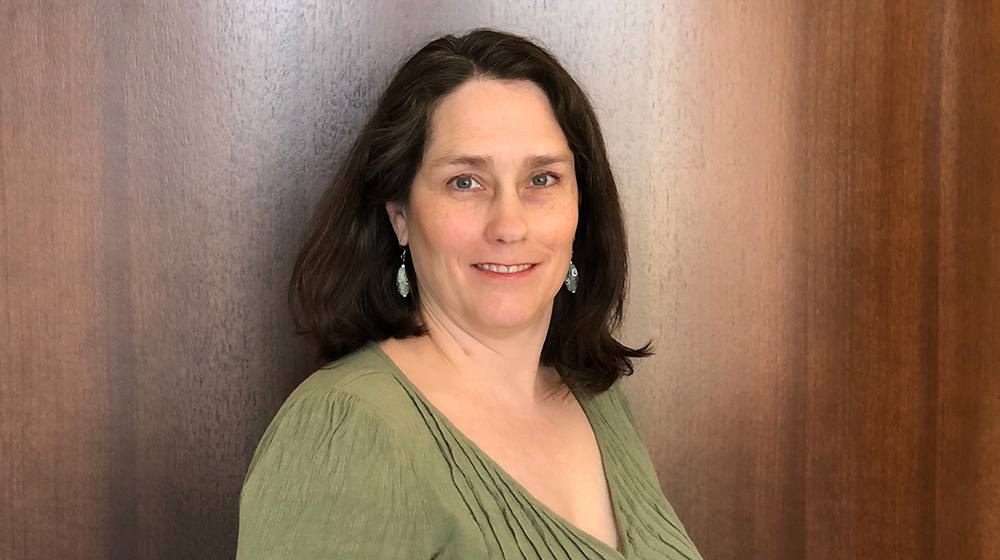
Department of Laboratory Medicine and Pathology
Helped Lead the U-Developed PCR Test
Our lab has tested over one million samples and, at the peak, were testing around 60,000 samples a week. As a pathologist, it is part of my practice of medicine to develop and provide quality testing in a timely manner, and I think this aspect of patient care is often taken for granted because it runs smoothly and the inner workings of pathology and laboratory medicine are largely unseen. The pandemic drew back the curtain to the many things that can affect the ability to provide testing, including resources, supplies, trained personnel, regulation and communication.
I believe these issues raise the question of whether laboratory medicine and pathology and healthcare in general should aspire to the same LEAN practices as other manufacturing and business practices or whether surplus should be built in for emergencies, such as a global pandemic.